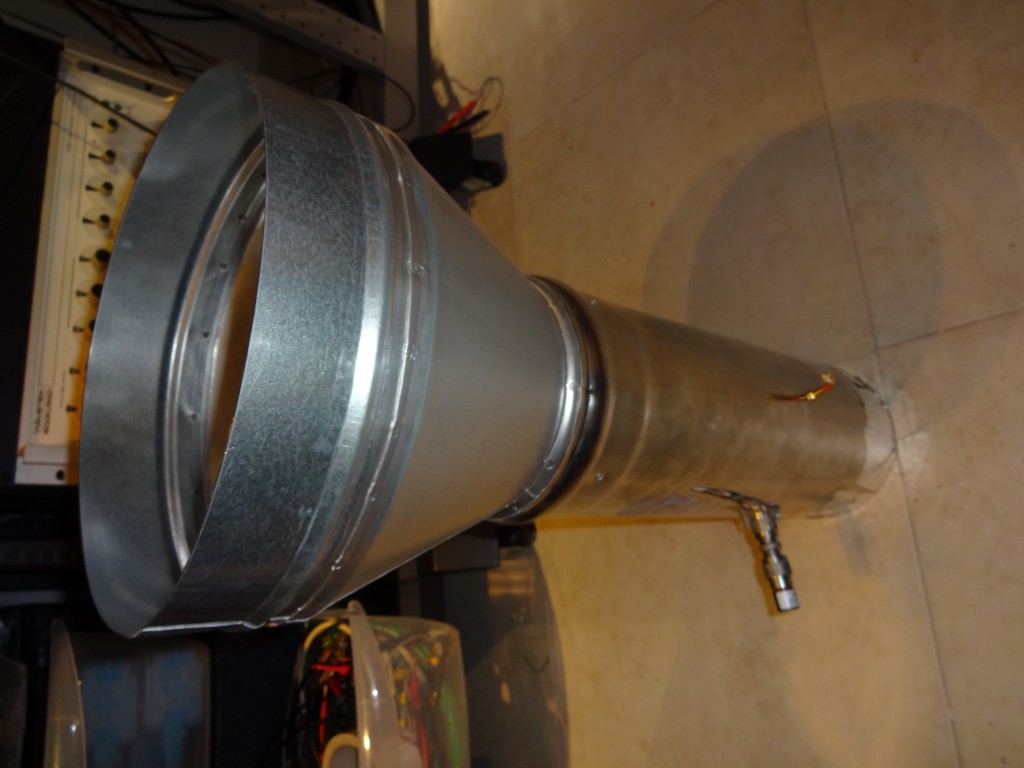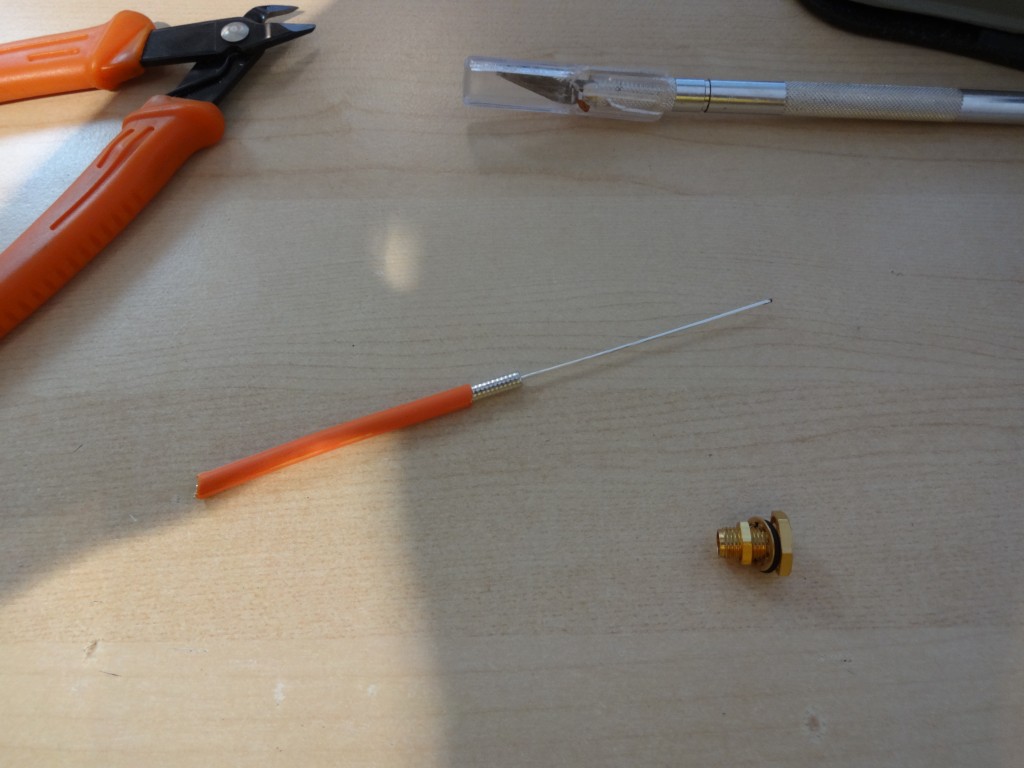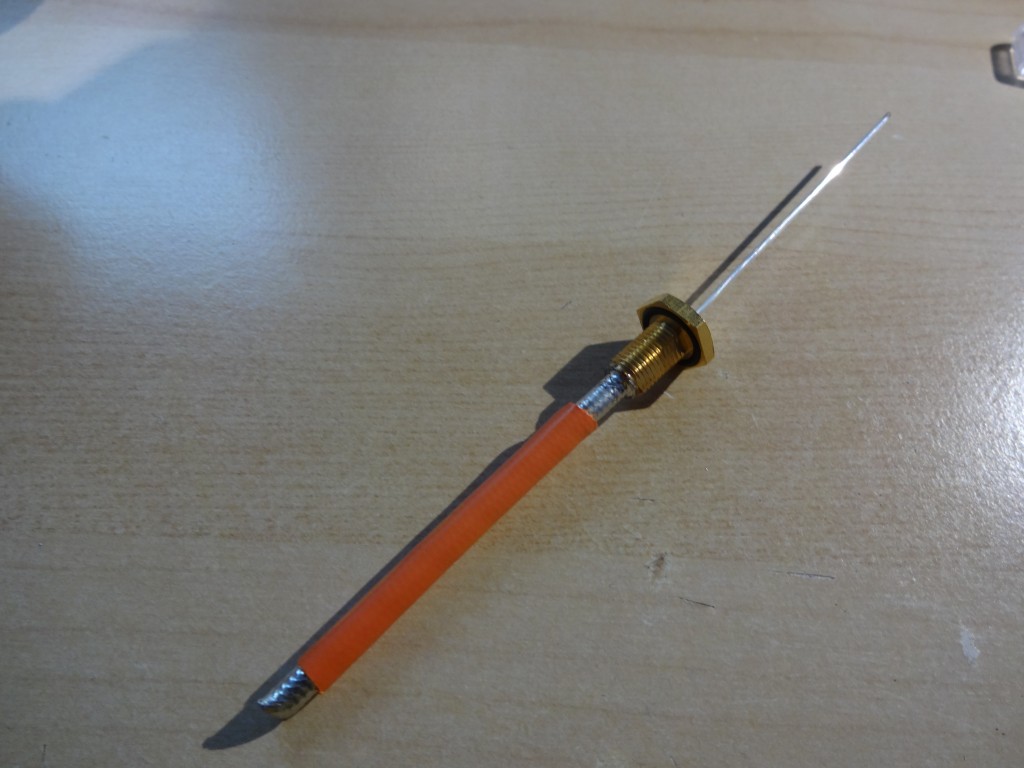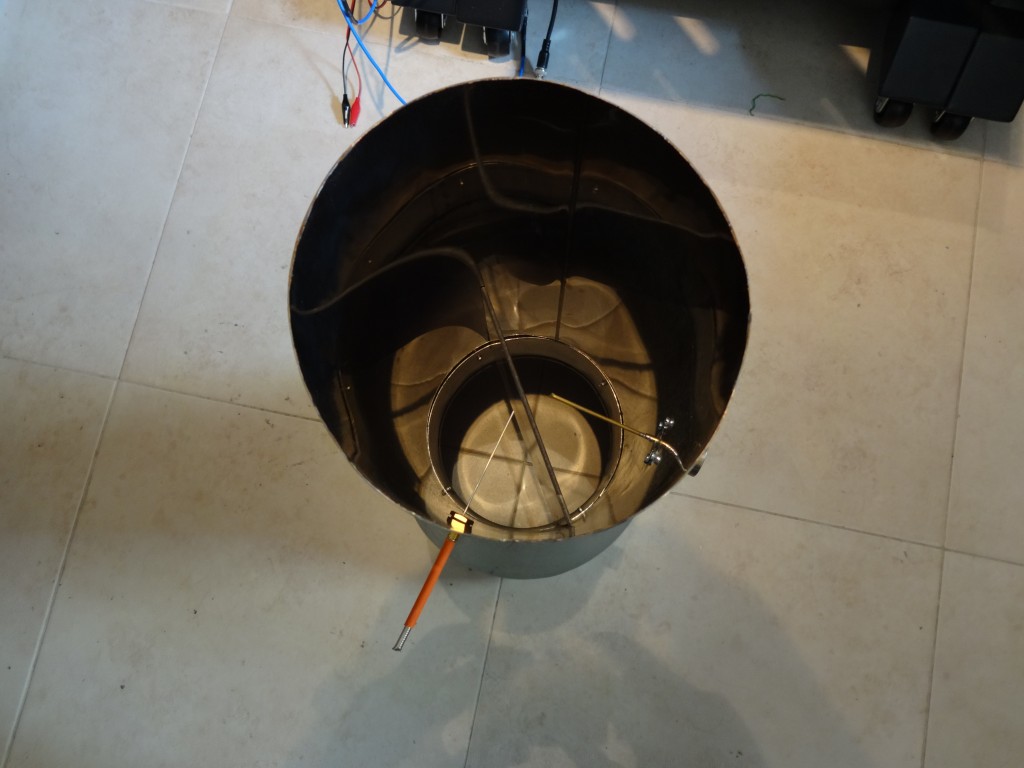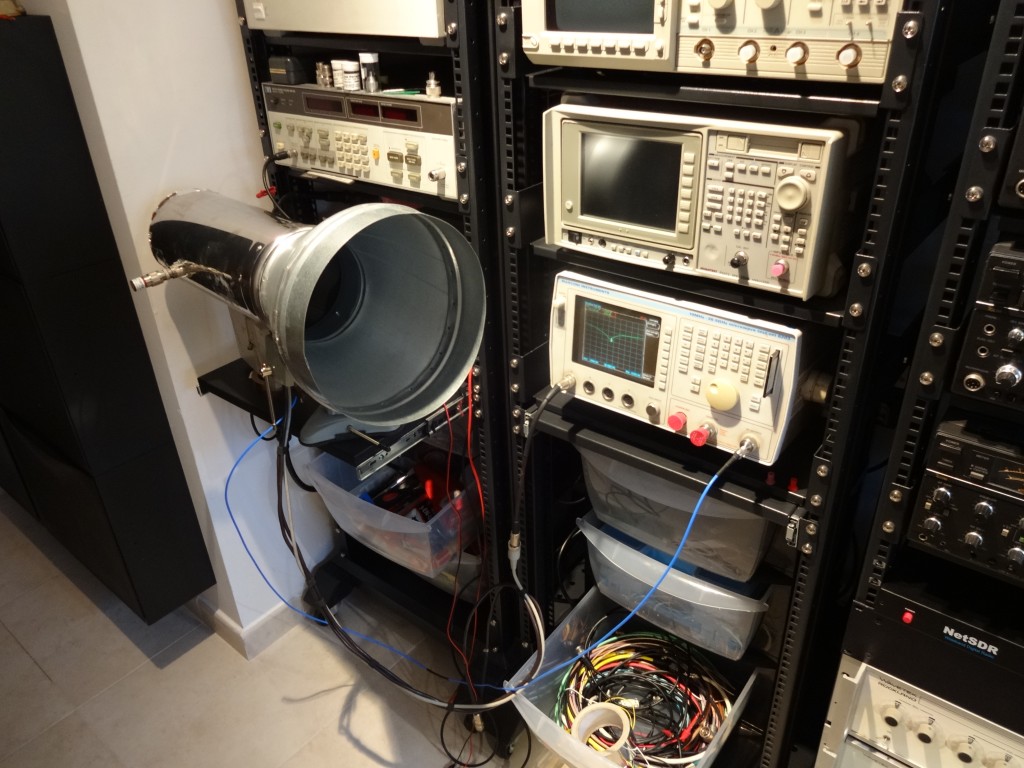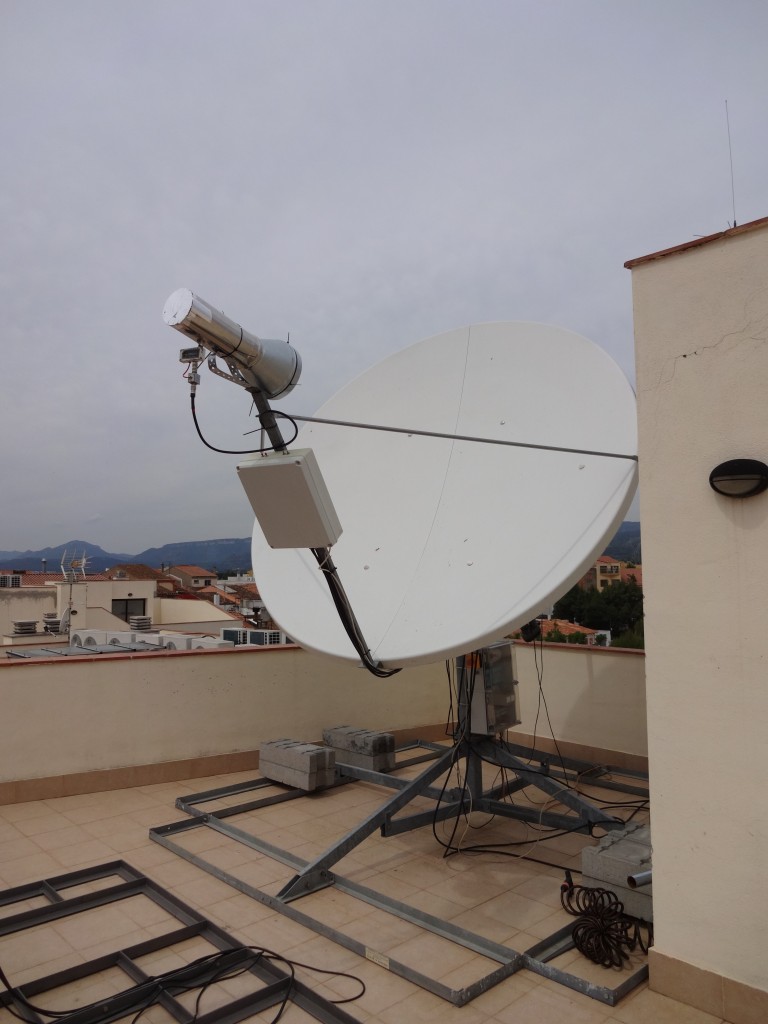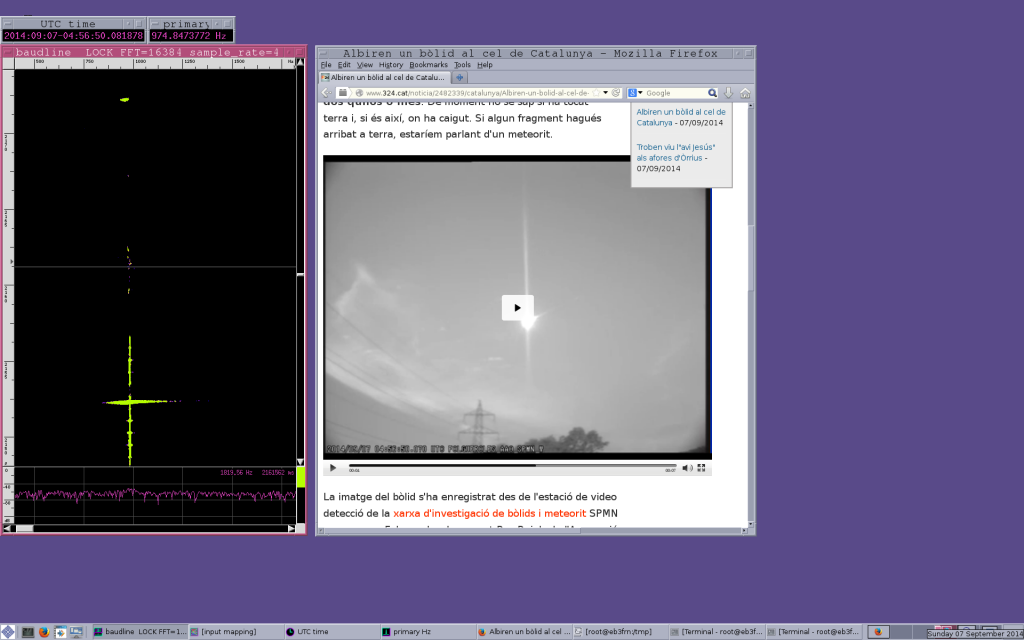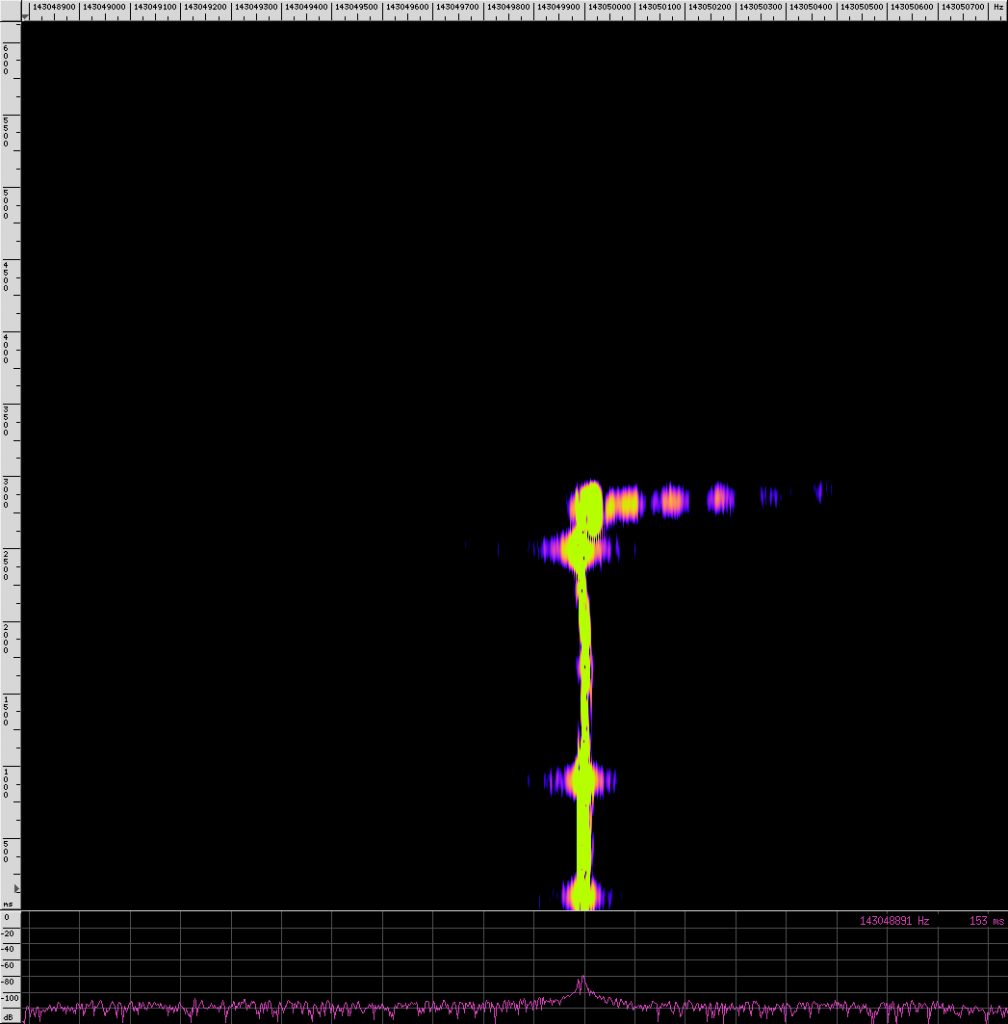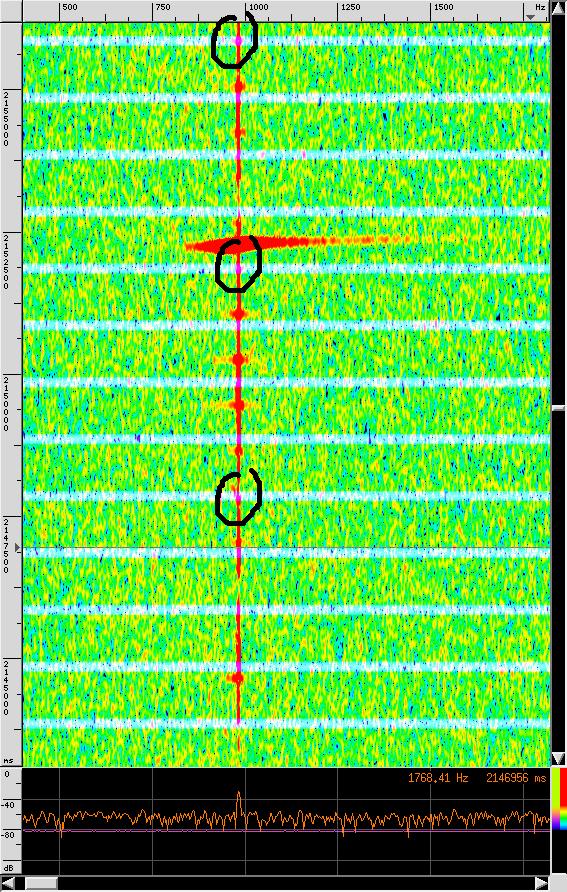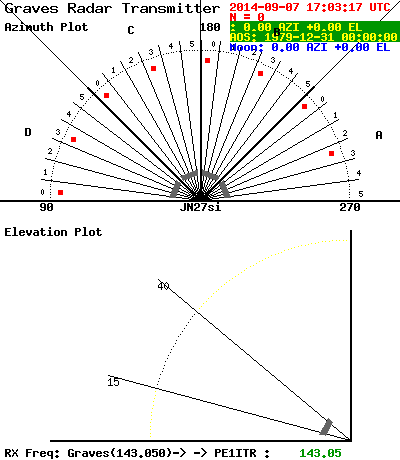Recently I build a circular polarization feedhorn to try to do EME in 1296 MHz. The hint was that it have very easy to build and cheap. I was looking some designs based in ual mode septum designs from N2UO and RA3AQ but they not are easy to build for me. My idea has been use fireplace pipe and a dielectric depolarizer.
To build the feehorn I have used fireplace inox pipe of 150mm and a galvanized reduction from 250 to 150mm. The dielectric depolarizer is a piece of Rogers Duriod 5880. To try to minimize the number of sma connectors, I used a small piece of Suhner .141 as a probe that will connect directly to the LNA saver switch.
In the TX port I used a standard N connector. I measured the RL in the lab, but have to measure the RL in the dish for this reason the bottom plate not is soldered yet, it is glued using metalic tape, until the RL is adjusted on the dish.
